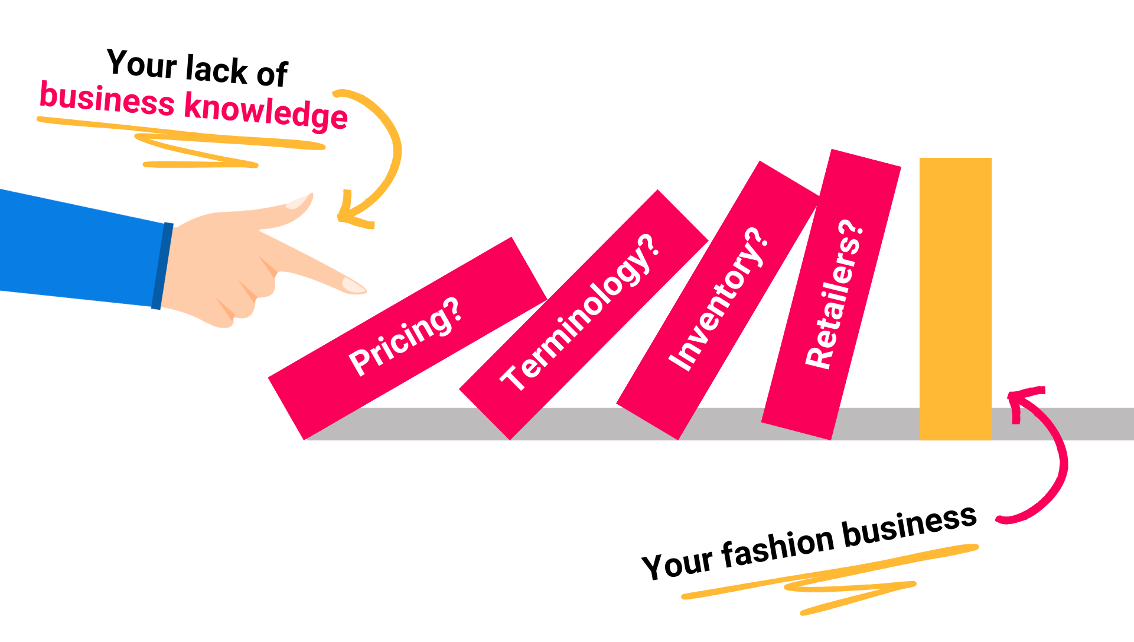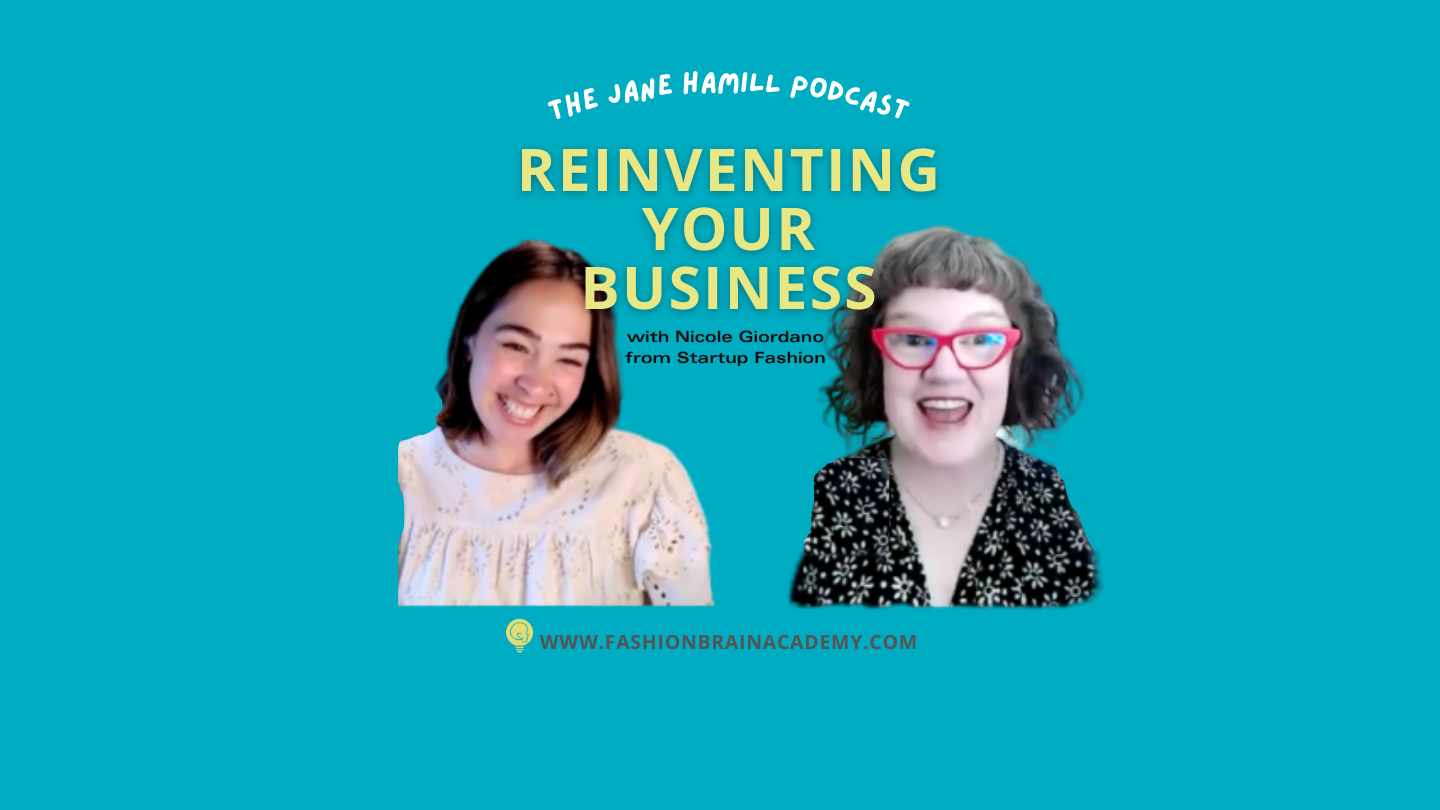Note From Jane: Hey Friends! This is a guest post from Ellen Malloy, publicist, digital strategist, marketing coach, and about the smartest, coolest person you EVER will meet. I’m thrilled to be able to snag her for a guest post (and more) because she’s used to working with the likes of Michael Jordan, Oprah’s chef, and James Beard award-winners (the Oscars of food). Enjoy! – Jane
Welcome to DIY PR Hacks—easy-to-execute publicity basics that can get you quick wins without investing more time than you probably have—we’re assuming you have about one hot second. That sound about right?
The entire idea behind these hacks
is to shift your focus from getting your story told
to understanding what the media are looking for
so you can see where you can fit in.
Most people assume the best way to get coverage for their business is to pitch their story to the media.
Here’s why: You’re excited about what you’re doing. You get amazing feedback from your customers. You can even prove the growing value of what you do by the consistent growth of your audience. It seems logical that the media would be interested in covering you.
It can be confusing to discover the media isn’t and defeating to wake up one day and realize that you’ve been working hard to get some coverage and not one journalist has even responded to your email/call, let alone written about your brand.
Know this: Press coverage is not dependent on the level of awesome that is your business. It’s dependent on the way they approach the job they have to do. The media’s job is not to write about your business; it’s to report on news, be timely, and to get their readers to come back for more.
You’ll get farther, faster if you shift your focus from trying to get a reporter interested in you to understanding what they’re already writing about and figuring out how to slip in. That’s what DIY PR Hacks are all about.
“You’ll get farther if you stop trying to get a reporter interested
in you and focus on what they’re
already writing and slip into it.” – Ellen Malloy
1. Be Ready
If I had a nickel for every media opportunity lost for lack of readiness, I’d be writing this from a private island. The media waits for no one and if you don’t have your materials together when the opportunity arises, they’ll simply move on.
Here’s an actual event I witness myself that drives the point home: One evening, a journalist wrote a roundup of great events for the coming week for her column. When she was done writing, late afternoon on a Saturday, she started fact checking. Fact checking is the process of systematically confirming all the details of a story to make sure they’re correct. For a roundup of events, the writer needed to check the date, time, location, ticket price, etc.
As she went through each detail, she’d either call up the “PR contact” from the event release or hop online to confirm the information on the event’s website. If the business didn’t answer, the person answering the phone didn’t have the details right then and there, or the website wasn’t complete (or even readily available online and not just buried in Facebook), she’d simply delete the event from the story. No second chances, no call backs from someone else, no nothing.
Is it fair? Does every journalist work that way? OMG! How could anyone be so… what? Efficient? She wanted to get her job done and clock out just like everyone else. She writes this column every week. Could you imagine how difficult this weekly column would be to compile if she didn’t just handle the whole thing this dispassionately?
It hit home the reality for me in a way nothing else ever could and I hope it does for you as well: you can actually get cut from a story you were actually written into if you don’t have your shit together at the exact moment when the journalist wants it.
Next steps: Don’t read the rest of this article until you’ve got all your media resources (not just events, your business and products too!) lined up and ready for anyone to find them whenever they want them, regardless of what time it is or where you are.
2. Use Free Tools
HARO (Help a Reporter Out) is a free platform connecting journalists looking for sources with people like you who have an expertise.
Journalists post their queries, HARO ships them out to everyone who has signed up to receive them. All you have to do is look for topics for which you have something to say and respond as appropriate through the system. If the journalist is interested, they’ll reach back out.
If the stories are going to everyone, isn’t there a lot of competition for the best stories? Yup. There is. A lot! But guess what, that’s the game.
The reality of publicity is that it rarely just falls into your lap—not even for the pros. But those that suit up and step onto the playing field end up getting picked for the team and those that don’t won’t.
HARO is a playing field that comes to you, right in your inbox, three times a day, cutting out the long and difficult process of creating a media list, creating relationships with folks on that list, somehow always magically knowing what stories they are thinking about, and then figuring out how to get in the story.
Before you start, please read HAROS rules. They’re actually solid rules for working with media in general.
ProTip from the gal I learn PR tips and strategies from, Selena Soo—don’t just respond to the topics that directly relate to your business, respond to anything you can speak to meaningfully.
If you do, you’ll get in some good practice pitching and then (hopefully!) getting interviewed by journalists; you’ll earn nice press logos you might not otherwise get access to that can be added to your website; and you’ll be able to tell the next journalist you’ve got great experience from X, Y, and Z publications, which gives you vital credibility as a potential source.
3. Focus on N.E.W.
To the luxury publication, news is expensive, rare, and fashionable new products. To the mommy blogger, news is new tools that allow for shortcuts in the kitchen. To the fashion writer, news is a designer that’s new on the scene. To the lifestyle writer, it’s about a new event, a new trend taking off, or a fresh new perspective on an old topic.
The first three letters of news are N.E.W. and so they’re more likely to read your email/take your call if what you are pitching is actually new.
When you have something new, like a product, a menu, a season—use it when it is new. Don’t wait until “you’re ready.”
When you don’t have something new, shift the perspective so you have something new to say. By which I mean craft something meaningfully new—don’t just slap a “new and improved” label on it and expect magic. The media have been to that rodeo, thank you very much.
Here’s a few tips for newifying your idea:
- Think of all the unique ways people could use your product or service and pitch the best ideas as new—bonus points for any emerging new trends you might be able to latch onto.
- Turn your experience or product usage into tips and hints and start sharing advice related to your business instead of just selling product.
- Hack your product to see if it could solve a new problem. I recently hacked a pair of hiking pants into tricked out travel pants with hidden pockets and extra loops for my earphones. My hack turned these pants into a whole new story.
- Jump to a new vertical and introduce your new product to an entirely new audience. Those pants I just mentioned, before, their audience was hikers; now they can reach long-term travelers and digital nomads.
4. Leverage the Calendar
To the weekly roundup, news is something like Valentine’s Day specials. To the TV producer, it’s could be tips and hints for decorating the Thanksgiving table on a budget. To the spiritual/health-focused blogger, a spring cleanse that starts with a kick-start ritual on the Equinox is perfection.
Remember that just about all content is about the calendar. It’s the easiest way in the door because it’s what the journalists are already writing about. You just have to be ready ahead of time to sneak in.
Here’s how: Posting a big calendar on your wall, spreading out each month of the entire year so you can see everything at once. (Seriously, every great publicist has a big calendar in their office, so go buy one and hang it up. If you’re location independent, create a dedicated google calendar called PUBLICITY and keep it live so you see it when you see your regular calendar.)
The next step should be approached as a journey not a task. Of course it’s great to sit down and bang out as much as you can but set a monthly timer to do some calendar maintenance and remember to add ideas and new information as it comes your way. This calendar is a working document and the more you love on it the more love it will bring you from media.
- Kick off your calendar project by filling in all the dates that mean something to your business: promotions, annual sales bumps (and slow periods), new product launch season, etc. When you’ve got the entire year on the wall right in front of you, you can see the entirety of your business’ natural publicity opportunities and where there are gaps that need to be filled in with a different approach.
- Then fill in all the dates that mean something to your industry: conferences or national award ceremonies, collective initiatives like New York Fashion Week, or recurring seasonal periods like back-to-school. For every industry, there are calendar dates that have meaning and during those periods, you’ll see stories written about those events. Stories in which you could start being included.
- Then, fill in all the dates that mean something to the broader community and you can connect back to your business: from Halloween to Easter, from National Rose Day to March Madness. Every day in the annual calendar is chock-full of topics and events and every one is important to someone. If you can make a meaningful connection to yourself or your business, there’s an opportunity.
Behold, you’ve just created your media calendar.
5. Dump the Distractions
Everyone with a product wants to get on Oprah’s Favorite Things. In fact, I’ve known companies that hired publicists on a monthly retainer to just work on that. Basically, it can make your business to get a hit like that, so it’s easy to think that it’s worth the investment to go for it.
Focusing on the gigantic win is a distraction that holds you back. Not just because they’re so hard to get, they’re also not exactly what they seem to be, so even if you “legitimately qualify” for inclusion, you might not make it in.
Let me explain: Oprah’s list isn’t really about “the best things Oprah found that year.” It’s better to think of it as “the best things Oprah found that aren’t repeats of other things from years past, fit into the larger framework of all the products being picked, and were also confirmed (and probably double-triple confirmed) that they would be available to every reader who wanted one—or ten—and have a near guarantee that they will be shipped immediately and professionally.”
The national list of best new restaurants? Those are not THE best new restaurants that opened that year but rather the selection of one or two restaurants in a city—but probably only one from a flyover state and likely never from two flyover states next to each other and also not in a location so remote no one can get there unless it is so spectacularly random that it seems almost oddly rural in that charming way to a NYer—that the publication’s national army of readers will absolutely understand and feel comfortable at if they are visiting another city and decide to try out one of the best new restaurants their favorite magazine picked for them.
Do you get where I’m going?
Being in one of these articles is fantastic, I’m not gonna lie. I worked with seven restaurants that got featured in Esquire’s Best New Restaurants and in every instance, their business soared. I also worked with a few restaurants that pretty much everyone agreed were the best new restaurants and yet they didn’t make it in. And I bet the chef of those jilted restaurants still doesn’t understand why, even though it’s plainly obvious to anyone who understands the game.
Here’s what to do instead: Focus on what you can control, not what you don’t understand—and stop wasting time on wishing for unicorns.
Stay tuned for part two, taking action…
In the meantime, tell me what you think if this article. Love it? Hate it? Have a PR question for me? Just leave it in the comments below and I’ll get back to you.
Sneaky P.S. Note from Jane that Ellen doesn’t know about: Hey! I’m trying to book Ellen to do a DIY Publicity Workshop for my readers! Something online, with info that’s easy to implement for small companies. Are you interested? Just reply YES in the comments below and we’ll see if my ever-so-subtle peer pressure will work. UPDATE 4.18.16 – it’s ON!! Free Webinar with Ellen and Jane! Click here to register now.






48 Responses
Yes… 🙂
!! Thanks Edo!
Wow. So helpful on many levels. Thank you!
Oh, and yes!
Woot woot! Thanks, Amy.
Yes! This has been the most frustrating part of starting a business, I feel like I keep shouting into a void! Thank you so much for this and yes PLEASE to a workshop!
Let’s fix that, Haley! Thanks for your comment.
Haley, I’d love to hop on a call today to ask you about these frustrations. I’d love to hear what steps you’ve taken that ended up with this idea that you are shouting into a void… would you be up for it? if so, message me at ellen at ellenmalloy dot com…
Yes
Thanks, Rajaa.
Uhm… I happened to see your sneaky little PS there, Miss Jane! And you know what, if your readers are up for it, I’m totally in! From the stories you tell me, they are the coolest bad asses around!
Ya saw that, did ya!?? There’s nothing like a little peer pressure and YOU are awesome for taking it in the spirit it was meant. And yes, the FBA peeps ARE total bad asses. You’re gonna love ’em.
I’ve been commenting on your FB Page and really love all the thoughtful questions. Seems like there is a lot of frustration about how this thing called “getting publicity” works… so I am focusing the webinar for folks who are looking for an overview of the “insider reality” of the process.
But I’d love to see some comments from folks who have actually gotten started and ended up generally frustrated. In fact, for anyone who wants to get on a call today, I’ve got the whole day ahead of me and would love to hear from people who have taken steps in the publicity direction and ended up at a brick wall.
YES!!! ABSOLUTELY!!! This was a fantastic article packed with really valuable information. Looking forward to part 2 and to implementing this knowledge!!!
I agree, Ayanna. PACKED with info is how Ellen rolls…
Ayanna, hey. Thanks for the props and even more thanks for deciding to implement the knowledge!!! Would you mind sharing what your first step will be? What are you going to do… and how are you going to do it?
Yes please!
Got it! Thanks, Daniela.
Yes, please! Great practical tips, and looking forward to #2.
Right?? Ellen is the best. Part 2 is coming up!
Love this!! So helpful!!! I am launchjng my line in early spring 2017….when do you recommend I put pictures of my pieces on my website? Obviously I want time to get press and I always hear the earlier the better, but if I show the line too soon, don’t I bump into the problem of it being “old news” by the time I actually launch? I can’t figure out the happy medium or maybe there’s another approach (leave something to be unveiled later?). Thanks for the post Jane and Ellen!
I have the same question!!!!! Also launching in spring 2017 =)
Leah and Irela: Jane and I talked about this for a while. And before I answer I want to remind you: my answer is about dealing with media—NOT consumers. So, while Jane is going to have one answer to this question for consumers… my media answer is different.
OK, you promise you understand that? Because it’s important. I want to make sure it’s not confusing… so double pinky swear before moving on and if you need clarification, please ask! It’s important we are on the same page.
And now the answer: as long as you have a clear concept of what you are selling AND, professional photos, and a pretty close to accurate price, it’s never too early to let the media know what’s coming. Be clear on when it’s coming. Be clear that the “ship date” is subject to manufacturer delivery… but I’ve gotten great press for restaurants that hadn’t even signed a lease and thus had no address.
We can talk about it in more detail as it comes up… or maybe this is really a topic for it’s own webinar! But media need to know what’s coming down the pike—so they can get to know you, plan accordingly, start to identify emerging trends, and hopefully work you in.
My advice: shove this stuff behind a “Media Only” button so it’s not showcased for your customers. By the time your line launches, it’s new news because it is launching—the old news part is that if it ALREADY launched last week/month, everyone wrote about Spring 2017 months ago, and the publication is already on news stands.
This is so very helpful!! thank you so much!! It’s getting clearer in my head.
A question about the “media only” button – so what you’re saying is that it’s okay to start getting press about the SS17 collection and even with pretty pictures of the garments because once it actually launches that will be an entirely new-news section, so even if people see it they will be okay with seeing it again because the news is that it now launched, did I get it right?
OR
“media only” – is actually for MEDIA ONLY and the pictures and information about the collection is somehow only shared with the media (no public). If so, is this achieved by telling the reporter this is “media only”? or how does this “media only” button work?
thank you so much!!!
This is really so helpful!!
Thank you for this! And YES that would be wonderful!
Yes! And i will start on my media calendar right away 🙂
That. Is. Awesome. Have you gotten started? What’s your plan? And have you already started and are running into a roadblock?
Yes! This is informative, but also overwhelming!
Andrea, I could relate so much with your comment, I wrote you a blog post. I hope it helps!
http://blog.ellenmalloy.com/2016/04/18/my-secret-weapon-in-the-battle-against-overwhelm/
Double yes! (and esp info on what to include in any simple media kit would be valuable)
Ask and ye shall receive. What to put in a simple media kit is in the outline for the free course… sign up here: https://fashionbrainacademy.com/publicitywebinar/
WaPow!
So much helpful information. Definitely, YES.
Awesome! Super informative but so much information! A workshop would be amazing! YESSSSS
Jane once again comes to our rescue…
yes. we’re waiting…:)
Absolutely great info, so, absolute YES!
Many thanks:-)
This was great helpful read, thank you. And yes
I’m definitely getting a huge calendar and YES, YES, YES!
Bravo you! The calendar is the easy win. Looking forward to meeting you on the webinar!
YES! I have such a niche market, so sometimes I feel like getting press isn’t worth the effort… but I’m guessing I’m wrong. I would LOVE to learn more
Erika, sometimes working on getting press is, in fact, not worth the effort. But NOT because your too niche. In fact, when it comes to press, one can’t ever be too niche. The real problem with most PR initiatives is that the approach is too broad.
Hopefully we’ll cover this topic enough in the free webinar, we definitely touch on it. Sign up here and let me know if we don’t get that question answered. https://fashionbrainacademy.com/publicitywebinar/
Good strategic and practical advice…thanks for the posting(s)
Yes for sure, that would be soooo helpful!
Yes, please! What an opening of the mind and juices flowing. WITH HELP ! Knowledge and information.
Sorry — a bit late in commenting, but wanted to add my voice to so many who are interested in the “program” that might evolve!
Thanks, Wilhelmine… can you tell me exactly which parts were most useful and any bits that needed more clarification? I’d love to improve and make sure I am getting everyone’s questions answered.
Yes!!!
Looking forward to the Part 2!!!! I’m so excited about all of the information that Ellen provided and she broke it down so that the whole PR thing is attainable to small, emerging business owners! Thank you Jane & Ellen!
Thanks back atcha, Rita! So small steps seems key and with that feedback, I am going back to the webinar outline to make sure I am nailing that… it is always a challenge to master “not assuming everyone knows this” when you’ve been doing something for more than 20 years.
What is the one (or two) areas of publicity where a list of simple steps seems most elusive?